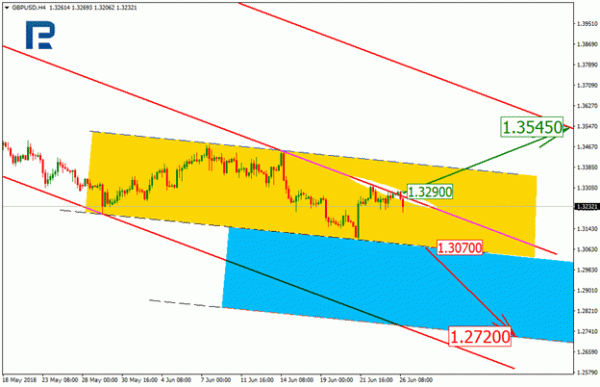This week, the British Pound is looking rather weak. Investors’ attention is focused on the GDP numbers over the first quarter 2018 to be published by the United Kingdom on Friday and although investors aren’t expecting any surprises, they are trying to avoid any risks. Apart from this, the European Union Economic Summit will take place at the end of this week and the UK promised to announce its updated vision of the Brexit procedure there.
Official Brexit talks between the European Union and the United Kingdom have been going on for a year now as they started on June 19th 2017. Over this period of time, the parties have been completed the first stage of negotiations, which was mostly about legislative and law matters. They have also discussed the amount of fees and penalties to be paid by the United Kingdom for wrecking agreements. Several times, the talks were put on hold due to some serious conflicts and tensions. On paper, the negotiations will have to be completed by December this year, but there are some reasons to assume that they may linger on for a bit longer.
All this time, the Pound has been extremely “sensitive” to changes in investors’ sentiment, who were following the Brexit talks. No one expected the negotiations to be easy: there were no such cases in Europe before, that’s why the procedure may really take much time and be very complicated.
Investors, manufacturers, and businesses themselves can’t decide on how to deal with the Brexit procedure and future outlooks. The latest news said that BMW, a German multinational company that currently produces luxury automobiles and motorcycles, may decide to close its facilities, which are located in the UK, if the negotiations take much time and the company suffers losses. It’s not the first news that due to the Brexit the British economy may lose a lot of jobs offered by foreign companies. Earlier, the same was announced by Airbus. If manufacturers really decide to abandon the United Kingdom, it will extremely hurt the British economy and the Pound.
However, right now there are no reasons to expect an “exodus” of business structures from the UK. The Bank of England is doing its best to stabilize the country’s monetary system; consumer demand is high and stable and the companies and enterprises have no problems with capital.
From the technical point of view, the H4 chart shows both mid-term and short-term downtrends. However, when analyzing these different downtrends, one may assume that the dominating tendency may change soon. This is mostly because the price is testing the resistance line of the major downtrend. If the price breaks the resistance line at 1.3290, it may continue trading towards the upside projected channel. The target of this possible new uptrend may be at 1.3545. Still, there might be another scenario, according to which the pair may rebound from the resistance level and start forming a new impulse to the downside with the target at 1.3070, which is the short-term support line. If this line is broken as well, the instrument may move towards the downside projected channel and its support level at 1.2720.













